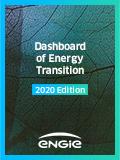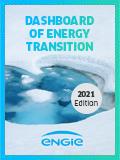Impacts of Covid-19 on energy in 2020
The Dashboard starts by presenting the year's main macroeconomic indicators, marked by the consequences of the Covid-19 epidemic, and the resulting impact on energy consumption and production in France and worldwide. Gas, oil, renewable wind and solar energy... Each energy source is examined in detail. Among the notable facts, the report establishes an anticipated 7% drop in world primary energy demand in 2020, a significant drop in oil consumption (-9%) – a logical consequence of the reduction in mobility – and an 8% drop in coal consumption due to the decrease in electricity production by thermal power stations. On the other hand, renewable energies have been much more resilient.
The 2020 Dashboard, barometer of the energy transition
Based on this state of play, the Dashboard outlines the evolution of the energy transition and presents different levers to meet environmental requirements. This information can be found primarily in the chapters on “CO2 & climate” and “Decarbonization”. The authors of the report explain, in particular, that the sharp drop in CO2 emissions seen in 2020 due to the health crisis is likely to be quickly wiped out, unless recovery plans favour green investments.
KEY FIGURE
CO2 accounts for 83% of greenhouse gas emissions.
However, massive economic recovery plans are still largely based on fossil energies. Few governments have chosen the “green recovery” path, apart from some EU countries. ENGIE supports this path because, firstly, it makes it possible to contain the rise in global temperatures (maximum limit of +2°C by the year 2100) and, secondly, it offers greater potential than traditional recovery plans. Examples in France with the government plan for the thermal renovation of buildings and the development of low-carbon public transport (electric, green hydrogen), and in Europe with the increasing installation of renewable energies. Finally, this green recovery generates growth, innovation and job creation.
For a transition towards a carbon-neutral economy
In conclusion, ENGIE suggests two paths towards reducing greenhouse gas emissions in its Energy Transition Dashboard: reduced energy consumption on the one hand – in particular through energy efficiency and increased sobriety – and the decarbonization of electricity production and consumption on the other – primarily through electric and gas renewable energies (biomethane, green hydrogen).


